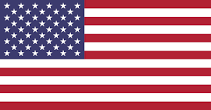FAQ
Why are there so many proximity card formats?
When electronic access control and card access systems became mainstream in the 1990’s, the early systems only worked with the 26 bit card format, which was a carryover from the old Wiegand card days. As more and more Manufacturers looked to differentiate their access systems (cards, panels, and software) and to reduce the likely duplication of 26 bit 125 kHz proximity cards, many of the access system OEM’s (original equipment manufacturers), started to create new card formats and most of the panel manufacturers started to make panels that could handle up to 40 or 50 bits of wiegand card data.
For a while these card formats remained proprietary to the respective OEM’s that created them, keeping customers card supply under the control of the particular OEM, and seriously limiting competition. Some examples of these OEM proximity formats include brand names such as AMAG, GE CASI-Rusco, Continental, DSX, KANTECH, Keyscan, HID, LENEL, Simplex, and many more. Over the past three decades many of these proximity card formats are quite prevalent and over time have become better understood by experts in the security and card manufacturing market.
Today, end customers actually have choice in where they source their proximity cards from and are no longer “locked in” to a particular card company or OEM manufacturer. This choice and competition in card supply means more competitive pricing and better lead times for consumers. However, customers should insist on the highest quality materials and companies that stand behind their products. End customers need to be careful to avoid cheap Chinese made card supply and instead work with vendors that stress Quality, reliability and require ISO certified products.
What is MIFARE technology?
MIFARE is the NXP Semiconductors-owned trademark of a series of chips widely used in contactless smart cards and proximity cards. The MIFARE name covers proprietary technologies based upon various levels of the ISO/IEC 14443 Type A 13.56 MHz contactless smart card standard.
What is MIFARE DESFire technology?
The MIFARE DESFire family consists of MIFARE DESFire EV1 and MIFARE DESFire EV2 products and is ideally suited for solution developers and system operators building reliable, interoperable and scalable contactless smart card solutions. It targets multi-application smart card solutions in identity, access control, loyalty and micro-payment applications as well as in transport schemes. MIFARE DESFire fully complies with the requirements for fast and highly secure data transmission, flexible memory organization and is interoperable with existing contactless infrastructures. Learn more about the features of our MIFARE DESFire products.
In real world products, given a choice, the DESFire EV2 technology provides better performance in terms of transaction speed and read range (how close you have to hold the card to the reader). This slightly better range can be important in access control applications where a customer is transitioning from an older 125 kHz proximity card system that, due to lack of security has a higher transaction speed and read range than most high security contactless technologies.

